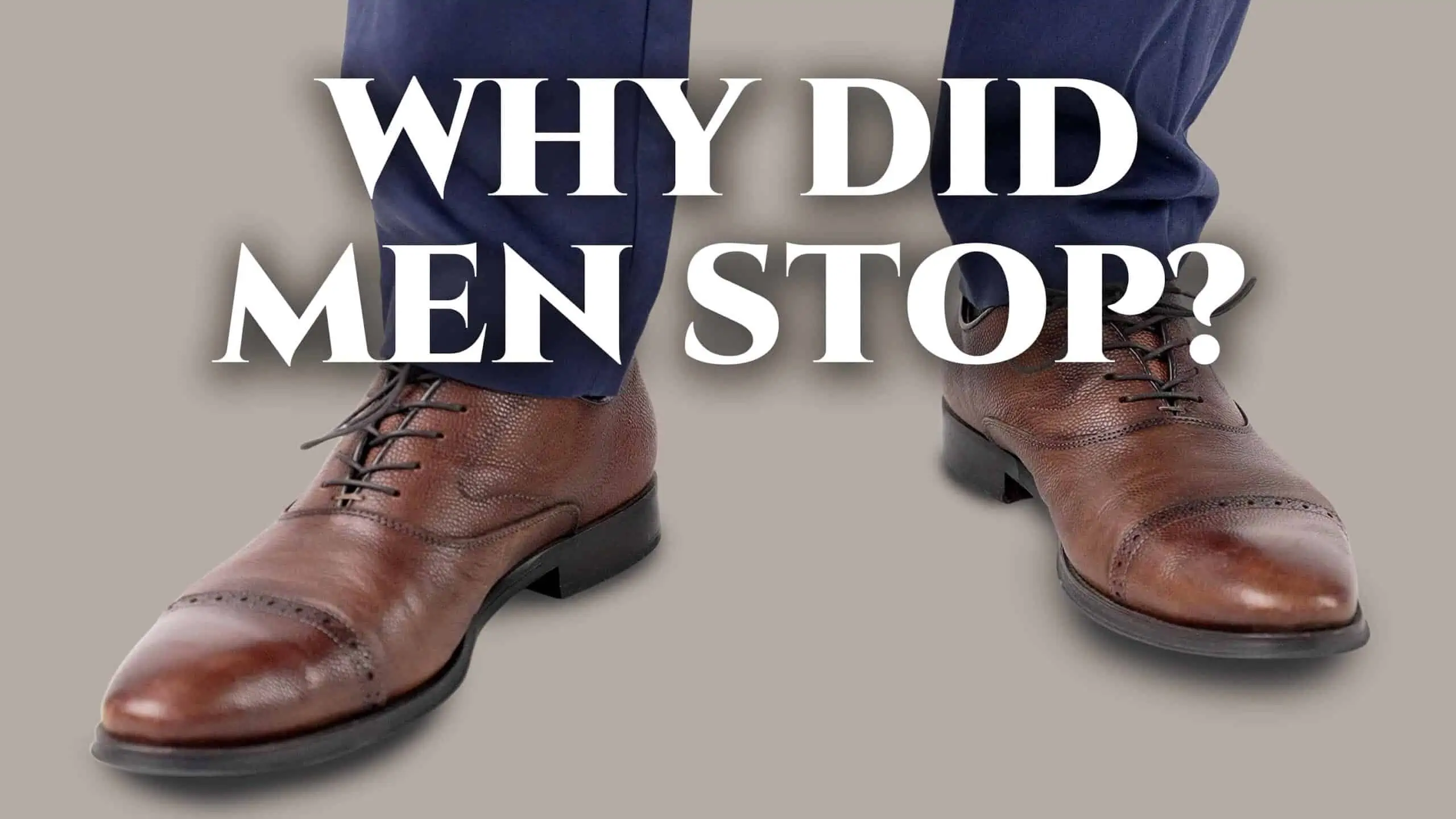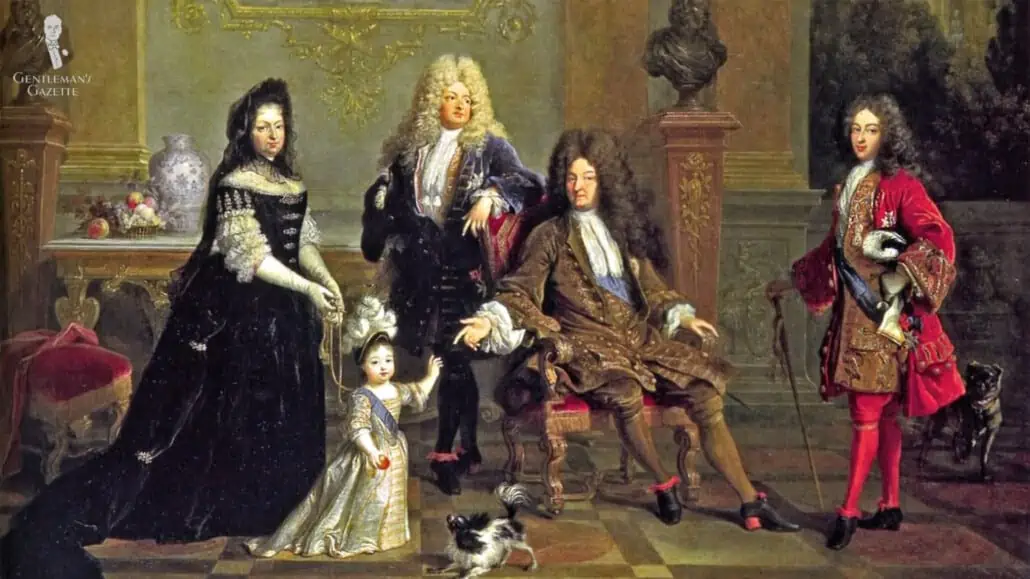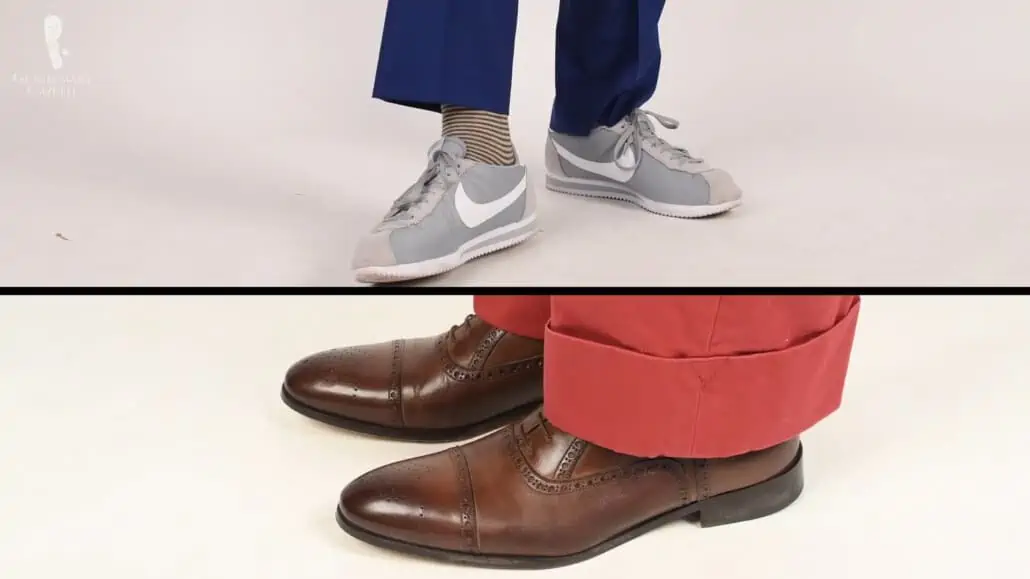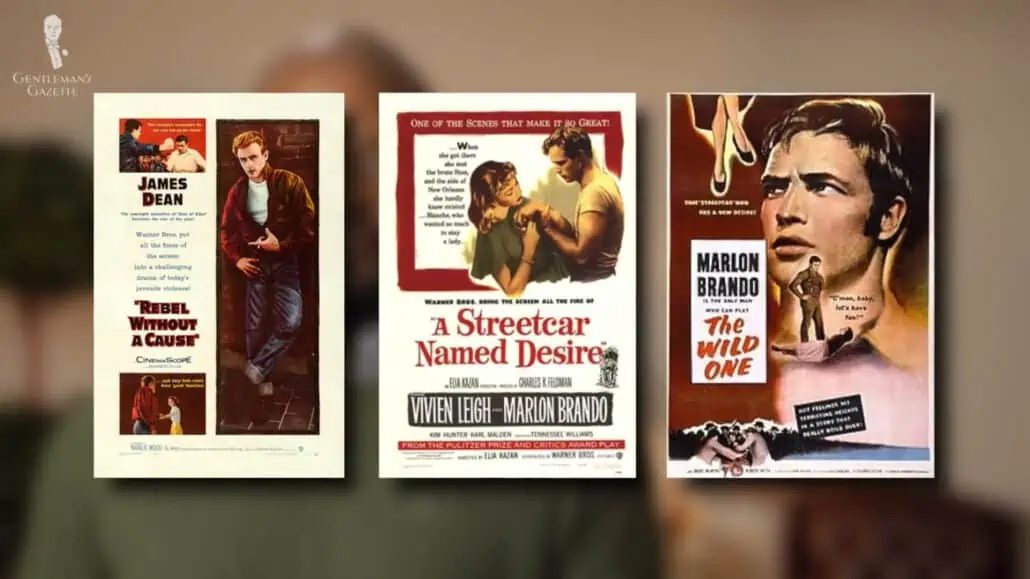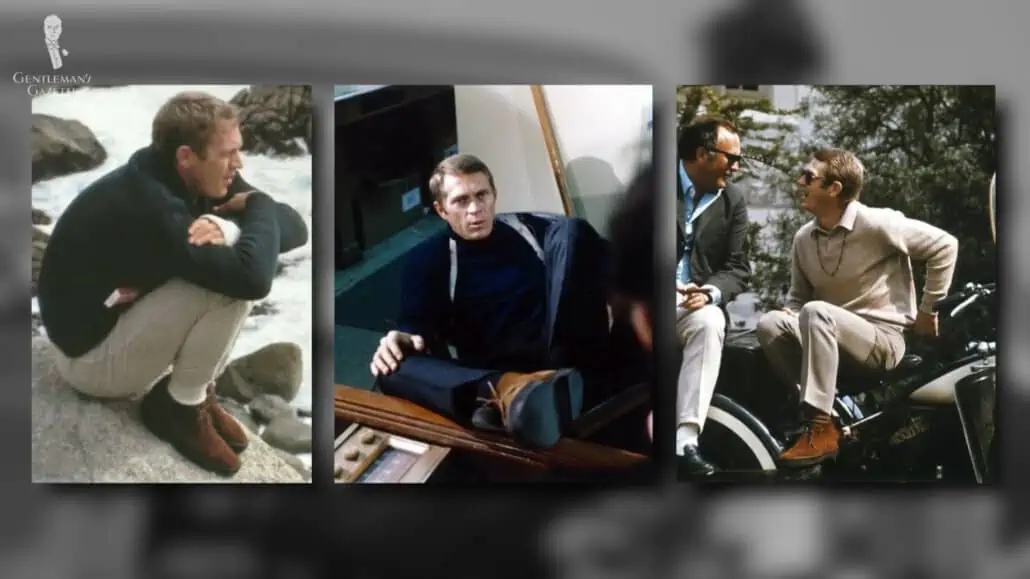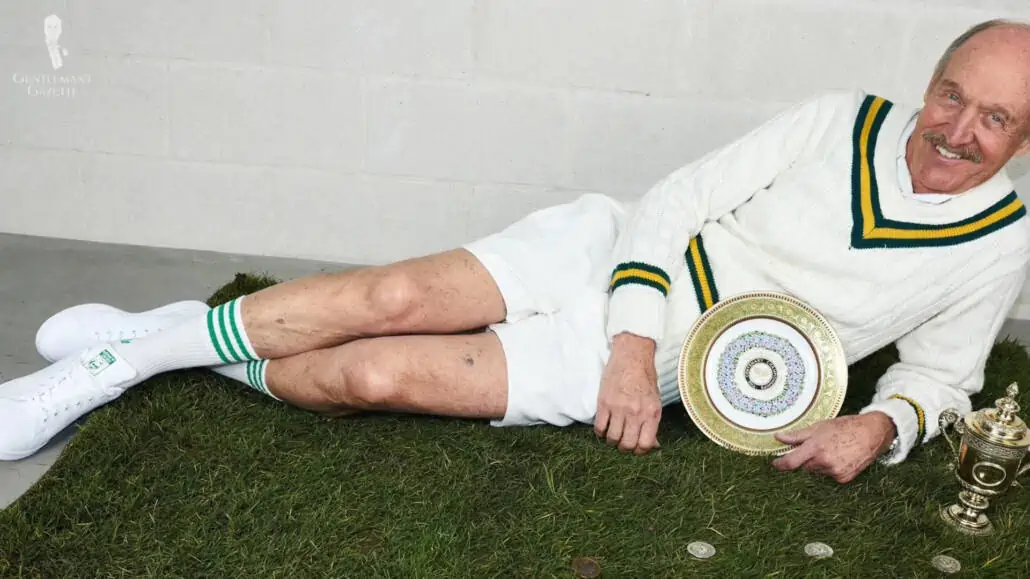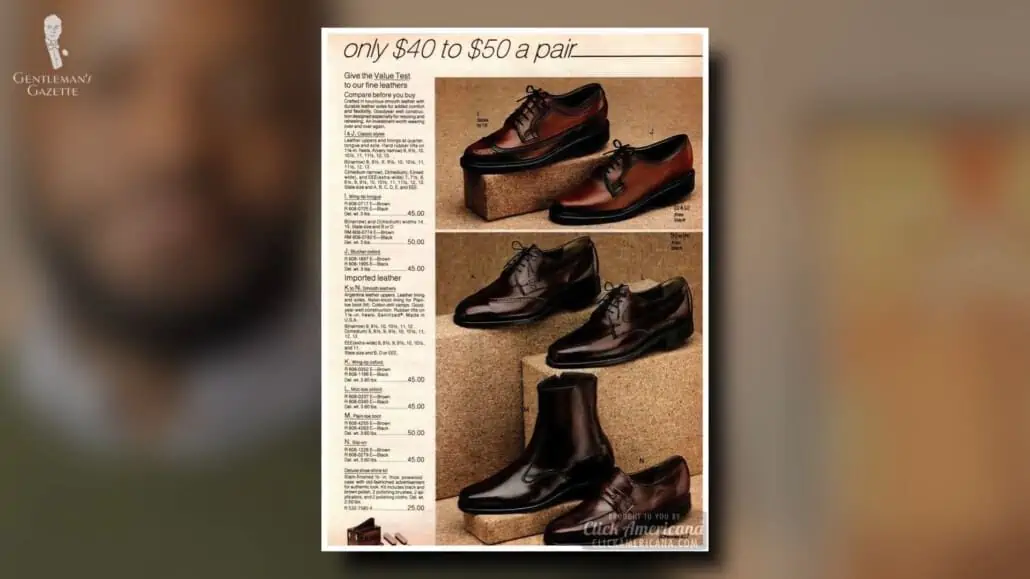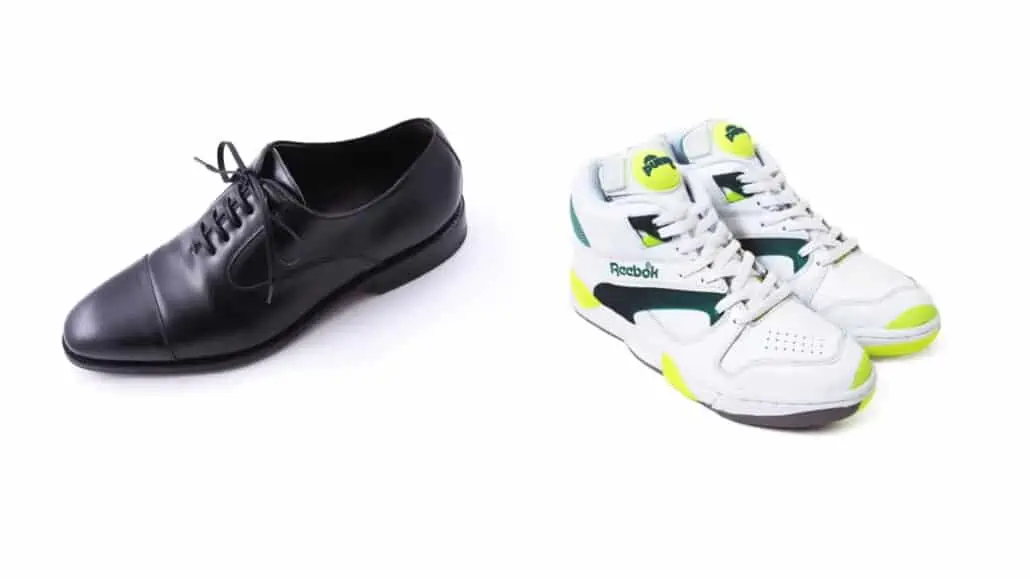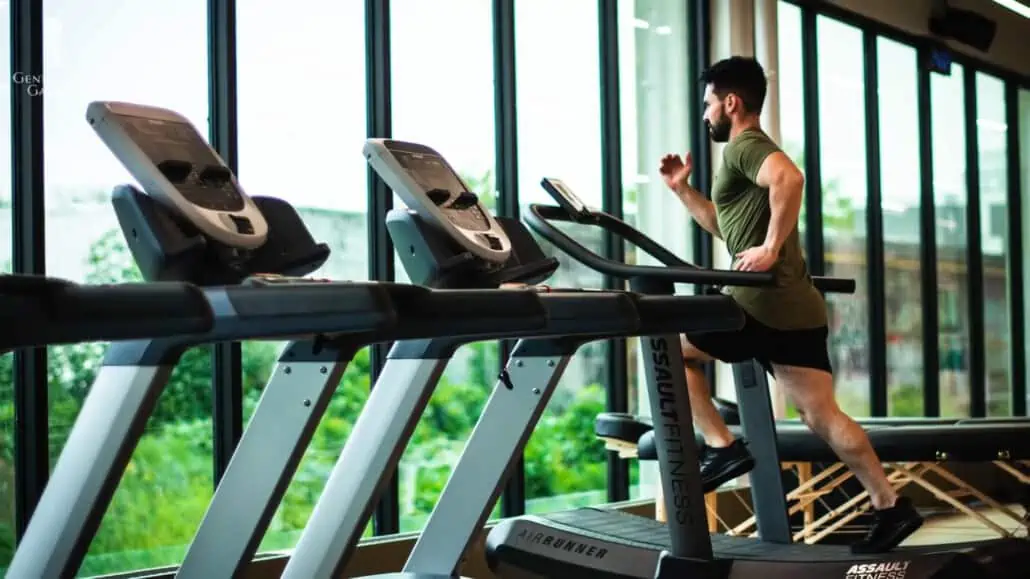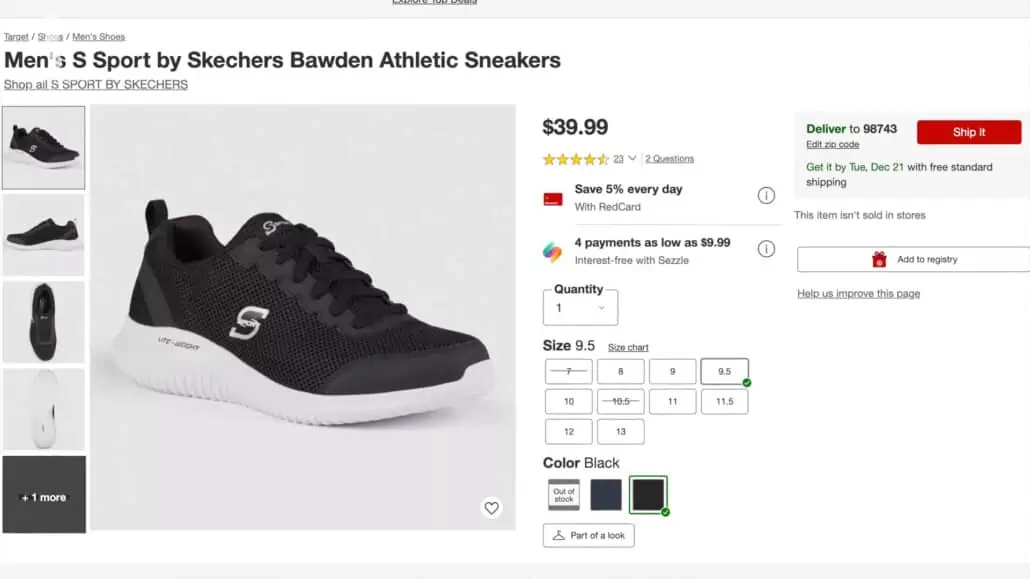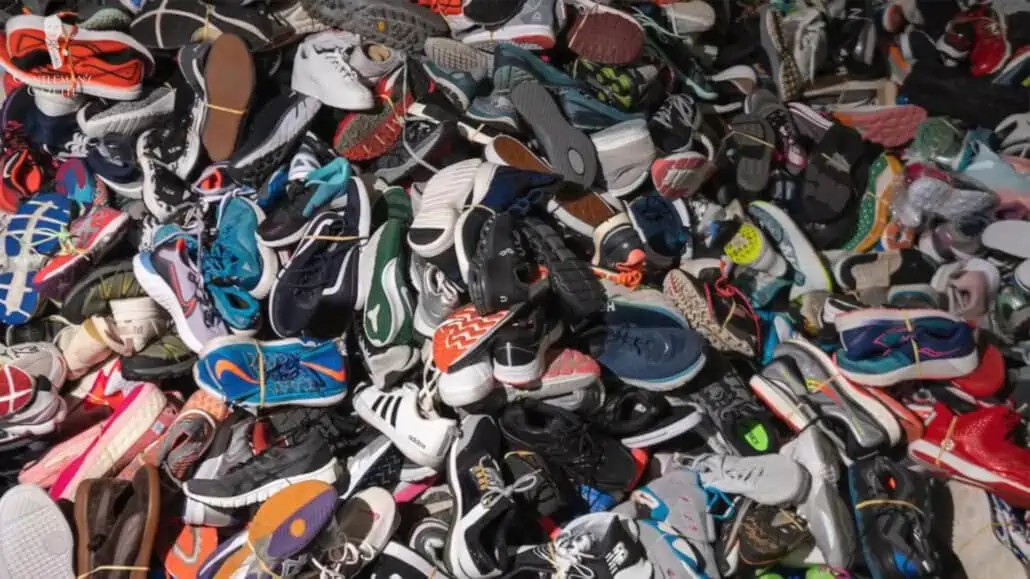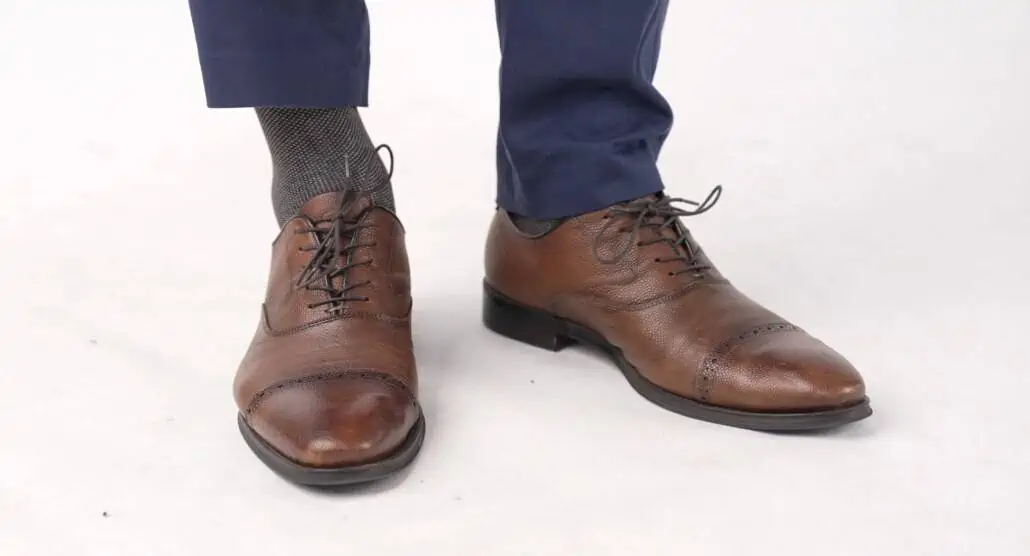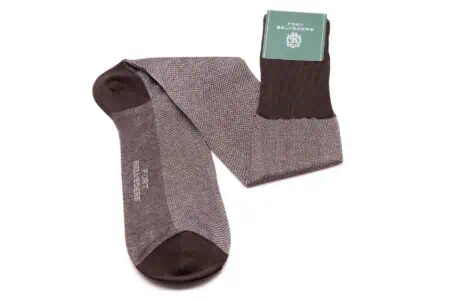It’s increasingly common these days for men to wear more casual clothing in many settings (even the office), and footwear is no different. But in an age where sneakers and other informal footwear seem to be the go-to choices, is the traditional business shoe dead–and if so, why did men stop wearing dress shoes? We’ll explore that topic today.
Here at the Gentleman’s Gazette, we love thinking about all things to do with menswear and we’ve previously pondered upon why hats are so rarely seen nowadays, as well as where the humble waistcoat has gone in recent years.
During these thoughtful moments, we’ve spent a lot of time resembling the famous sculpture “The Thinker” and with all that staring at our feet, we had a lightbulb moment: why did men stop wearing dress shoes?
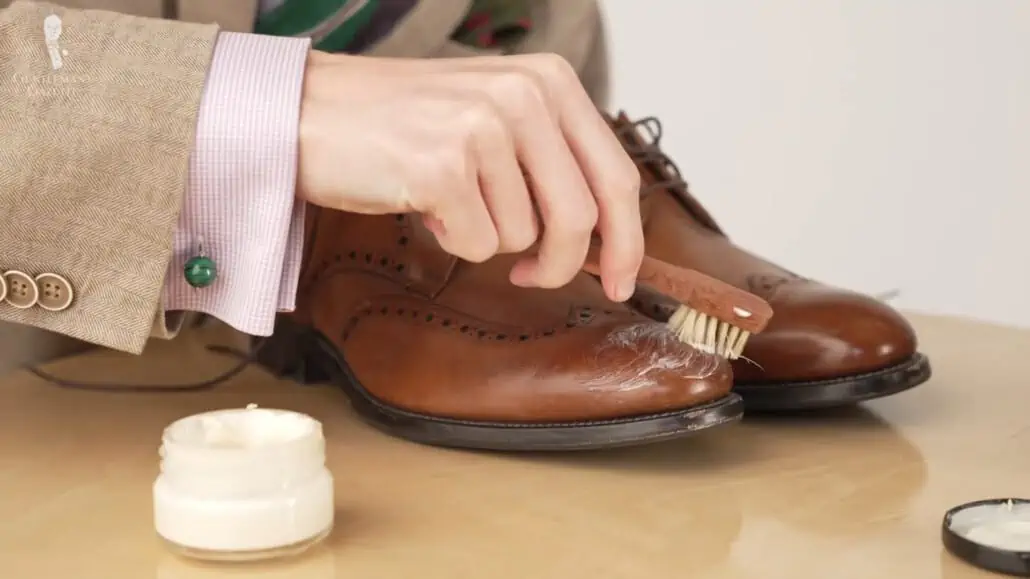
In order to tackle that question, we need to take a look at the timeline of men’s footwear. We’ve spoken about some in-depth points of footwork history and our exploration of Goodyear welted shoes, and you can definitely view this and today’s post as being linked in terms of stepping into history.
Early History of Men’s Footwear
It was around the time of the ancient Egyptians that footwear became more than just about practicality; as an extension of the class structure within their society, with only the most powerful and wealthy being able to don footwear at first.
These exquisitely decorated shoes took the form of what we now call “toe-post sandals.” And although the style eventually became available to all, I think you’ll agree the form isn’t yet resembling that of a dress shoe.
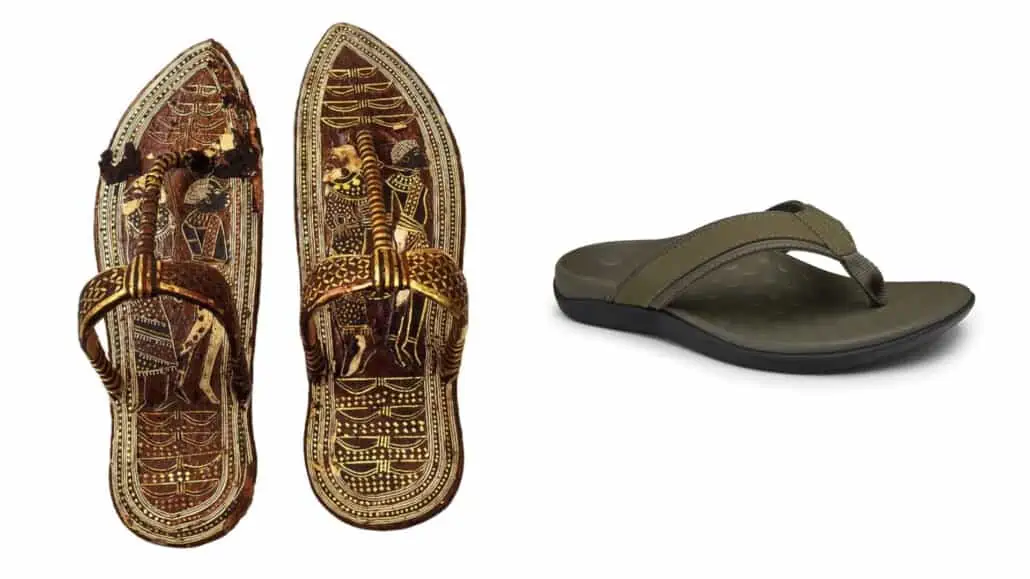
This sandal style would remain the foundation of footwear in both ancient Greek and Roman periods. With some innovations where the material of the sandal, usually leather, would be brought up and around the foot in a similar fashion to what we would now call a “shoe.”
This was developed further in the middle ages, where a new technique of sewing the shoes inside out and then turning them out the right way became highly popular. These shoes were unsurprisingly called “turned shoes,” and the method is still in use today, notably for certain types of slippers.
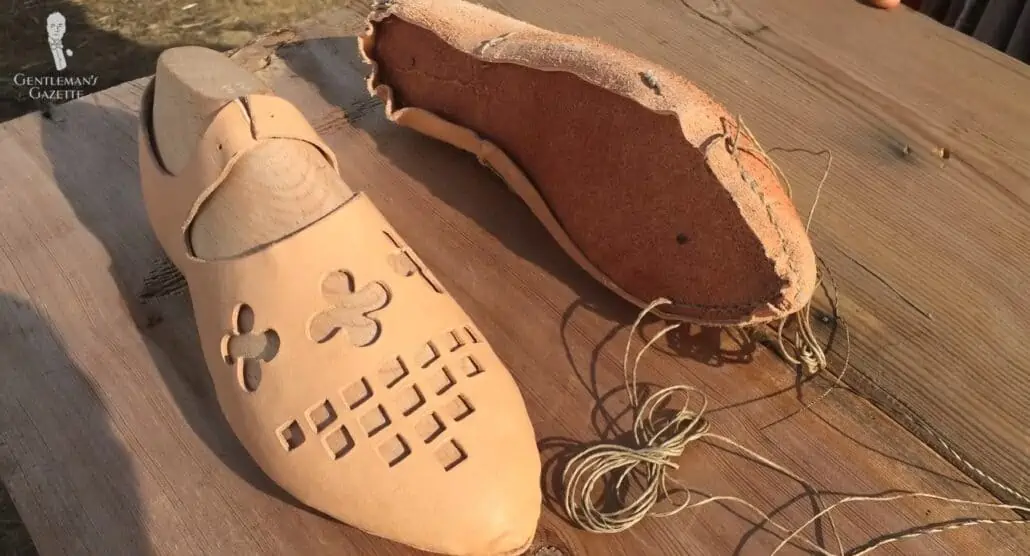
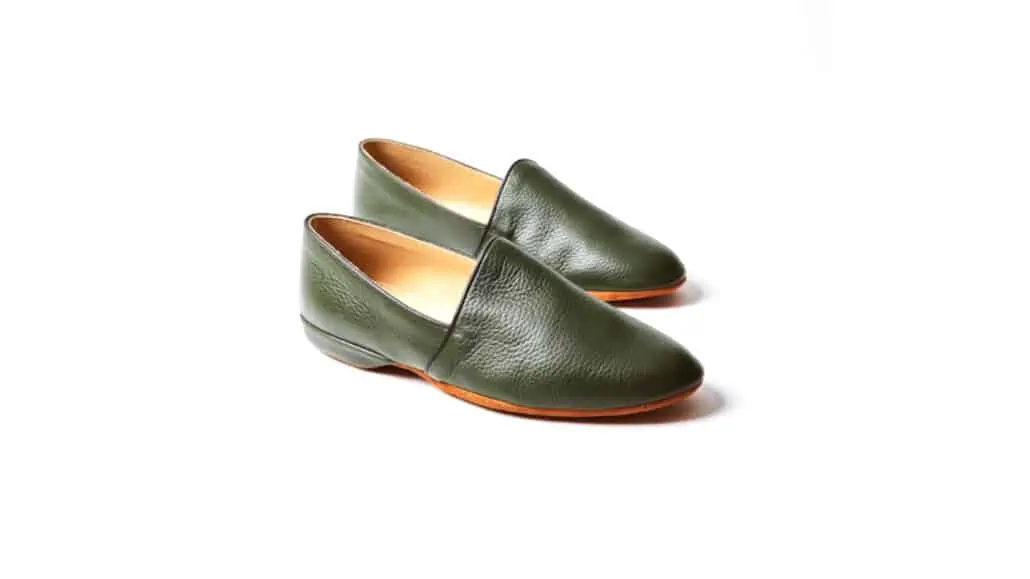
A specific style of turn shoe, called a “poulaine,” featured exaggeratedly long and pointed toes. These symbolized wealth and status. Basically the longer the point, the better you were. It’s the equivalent of a medieval Rolex – a status symbol.
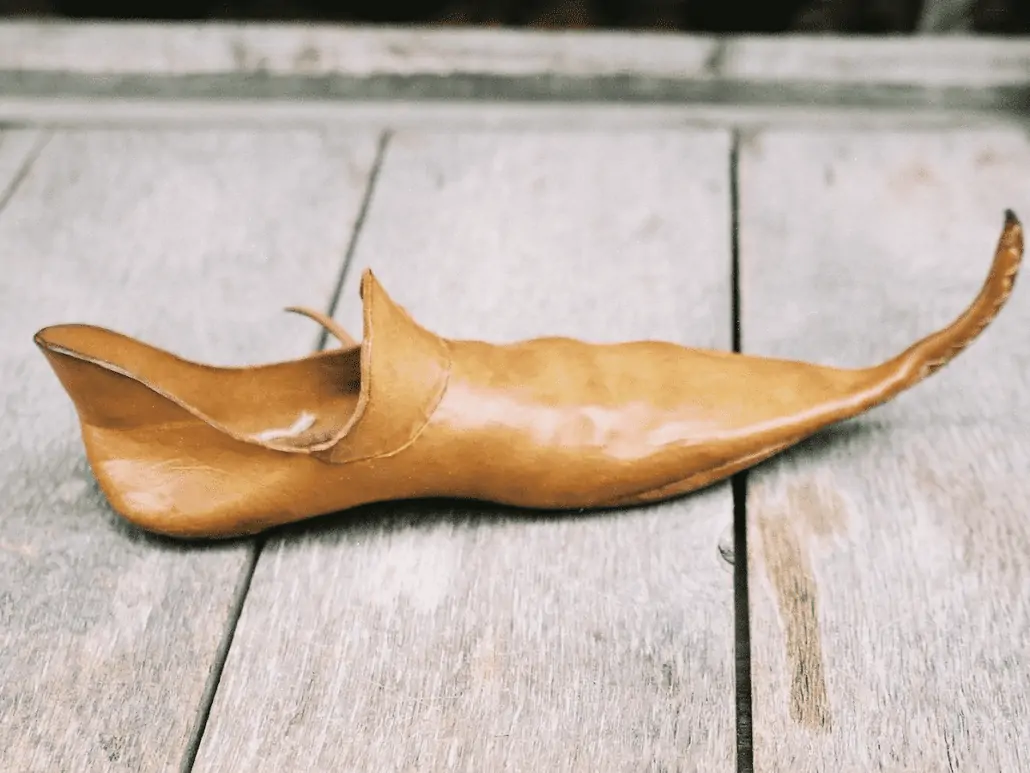
There’s a revelation in the renaissance period that may shock you – men were the first to wear high heels, not women. In fact the higher, the better. Much like the length of the toe on the poulaine before it as we can see on King Louis XIV.
Dress Shoes Take Shape
Over the next few centuries, footwear would become less flamboyant. With heel height shrinking and far fewer decorative elements on men’s shoes. It was in the early part of the 19th century where the Oxonian shoe was developed as a precursor to the Oxford.
The Oxford soared in popularity as a much more convenient style than the lace and button boots that were the norm at the time. These things took quite a while to put on and take off.
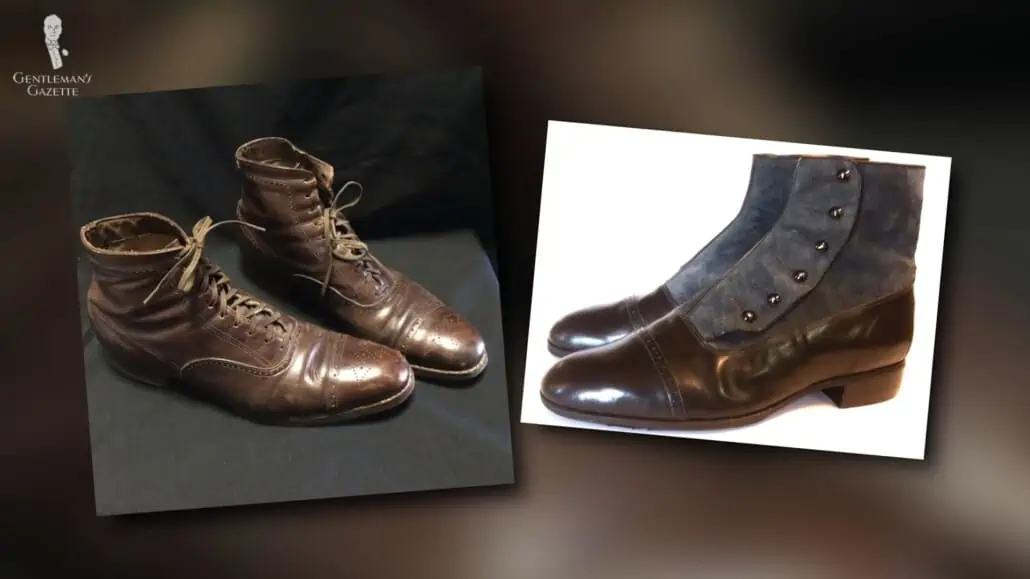
Although there will be continued development in what men’s footwear looked like in the coming decades, a lot of these changes were mostly aesthetic or a new marketing gimmick.
Footwear had mainly settled on a few key forms:
- Laced up shoes, whether an Oxford or Derby closure
- Slip-on shoes such as loafers, a refinement of buckled shoes, which we now call Monk Straps
- A variety of boot styles, which were effectively any of the forms of shoe
The Rise of Casual Shoes
When you think of casual footwear you probably have a pretty firm idea in your mind’s eye – things like boat shoes, sneakers, flip flops, and the dreaded “Franken-shoe”.
Sure, it’s plain to see that when you put any of these examples next to a pair of dressy leather Oxfords, there’s quite a difference in the levels of formality. But, none of these shoe styles come out of nowhere. Like we’ve seen in our history of footwear so far they are the product of time and development.
If you look closely, you can see that there’s one element that ties all these casual shoes together – rubber. Before it was made into some questionable Batsuit choices, rubber was being developed and tested as a sole for shoes with perhaps the most famous example being Converse sneakers, which have been around since 1917.
Of course, rubber had been used in footwear prior to this with the Converse rubber shoe factory being set up almost a decade prior in 1908. But, it’s these rubber-soled All-Star sneakers that really took the world by storm in the 20s, after being endorsed by American basketball legend, Charles “Chuck” Taylor, as the first-ever celebrity-endorsed athletic shoe.
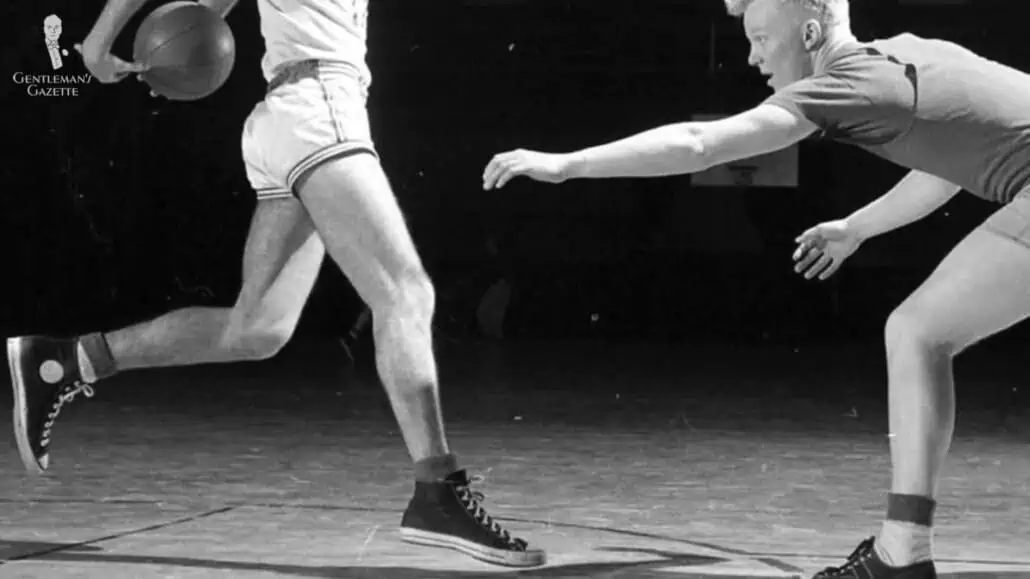
Although we know now that these sneakers were here to stay, they were first reserved for sporting activities, and many continued to wear dress shoes a majority of the time. But, there’s no denying a growing attraction to a youthful sporting lifestyle.
Due to today’s widespread availability of social media, we’re well aware of the impact that style influencers have. But, it wasn’t all that different in the 30s and 40s, as Hollywood heartthrobs and style icons would begin to dictate what was in vogue at the time. Who knew the birth of the influencer was much further back than the internet age?!
It’s no secret that James Dean and Marlon Brando are monumental in changing the course of clothing. Starring as rebellious characters in 1950s films, the world was introduced to a different style of dress. Audiences were previously used to seeing their leading characters wearing suits, ties, and you guessed it – dress shoes.
Even though these new styles were a lot more casual in comparison to everyday dress, their footwear still looks more formal than the casual footwear of today. That is because the work boot style featured in these outfits are really just a beefed-up version of a dress shoe, often featuring a rubber sole, as men still wanted to retain as much elegance as possible when it came to their footwear, all while still being protected.
The counterculture movement in the 60s is often pointed to you for a lot of changes in fashion. That being said, even one of the biggest front runners of said movement, Mr. Steve “King of Cool” McQueen continued to wear shoes that had a far more formal aesthetic to them than some of the more casual styles today.
Perhaps the style most famously associated with McQueen would be the Sanders chukka boot, which he wore pretty often both on and off the movie set. And even with their crepe rubber soles, all the other classic styling elements remain to position this footwear on the smart end of the spectrum.
The 70s is the decade in which the style kind of glitched and the shoes went pretty haywire. For men, the high heels of the renaissance returned with a vengeance and comfort took a back seat to fashion. Even the more reserved styles of footwear were pretty out there, regardless of if they had platform heels or not. And it wouldn’t take long for the seas of change to start growing again.
Casual Shoes vs. Dress Shoes
In 1973, German sneaker manufacturer Adidas signed a contract with Stan Smith and the resulting legendary tennis shoes would serve as an antidote to the foot-killing trends of the decade. Thanks to their comfortable padded leather uppers and, of course, rubber soles.
So, it’d be easy to assume from here that the move towards soft sport shoes happened overnight, but the dress shoe put up a pretty stern fight. We can’t deny that the casualization of menswear that started in the 60s and 70s really ramped up in the 80s and 90s. But, what really happened was more of a divide between casual and formal styles.
In the 80s, Wall Street was booming and, as we’ve seen in countless films, there were many young men hungry for wealth and power, and maybe a certain hedonistic lifestyle. So, even though the moral codes may have been sketchy, the dress codes certainly weren’t.
The suit moved away from the shiny, frilly, colorful excesses of the previous decades and became much more somber and serious, and the power suit of the 80s firmly made its mark. Footwear followed and the extravagant styles of the 70s were gone, bringing in more business-ready footwear choices with loafer and moccasin styles being particular favorites.
This trend continued into the 90s where, if you were in business, you did so in a suit and dress shoes. This time with brogues in the spotlight. Meanwhile, on the more casual side of things, sneakers are starting to gain prominence in what men wore when they were not at work.
The 1980s saw a big uptake in sports, fitness, and health activities, whereas things like this were previously only available to professional athletes or the very wealthy. After all, it was the decade where aerobics and yoga became worldwide interests, and getting the right gym wear was just as important as looking the part in the office.
Perhaps the biggest milestone in terms of casual footwear was the famous Nike Air Jordans, a basketball sneaker endorsed by NBA star Michael Jordan in 1984. Appealing to younger audiences, the Nike sneaker was a hit.
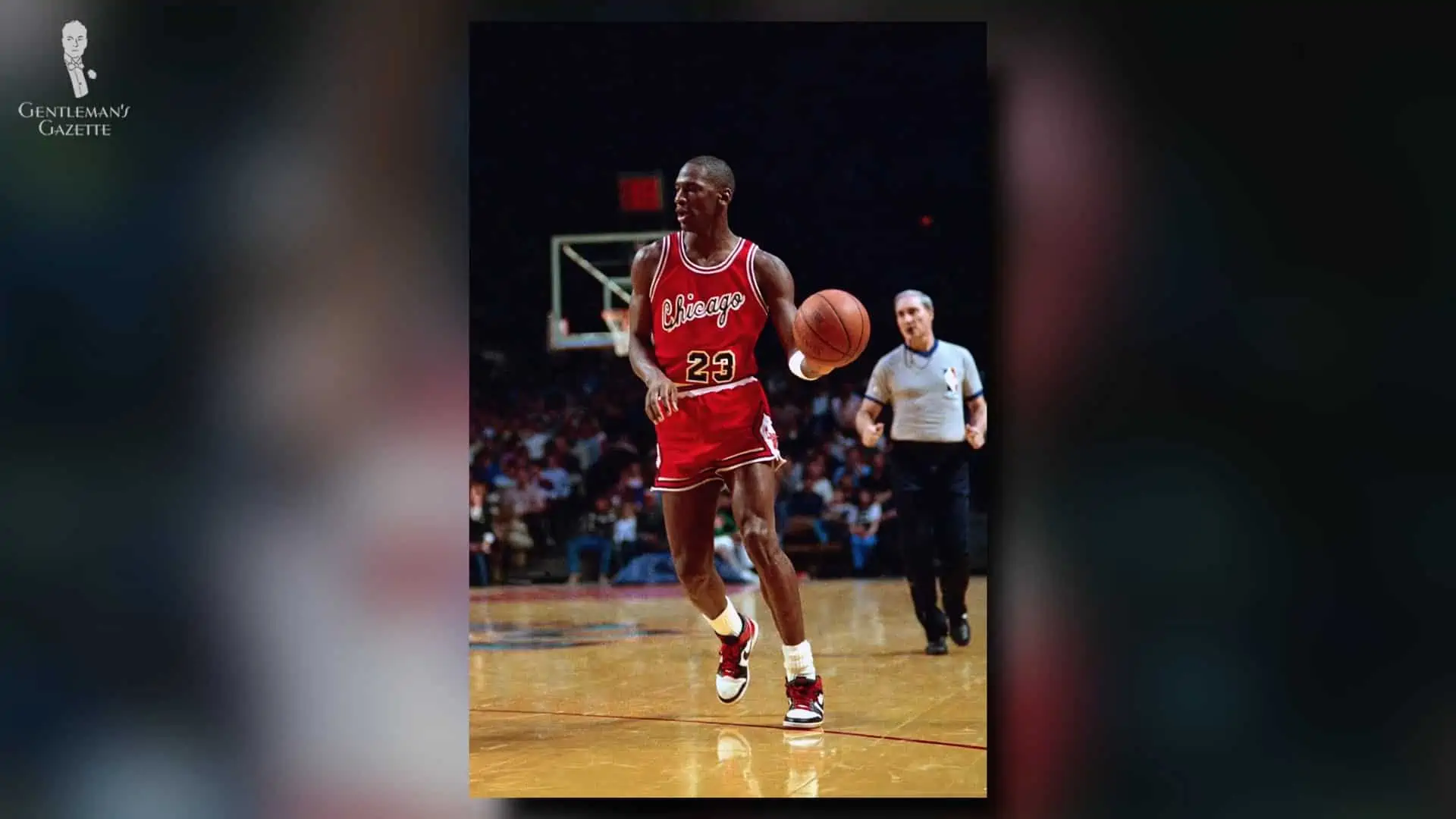
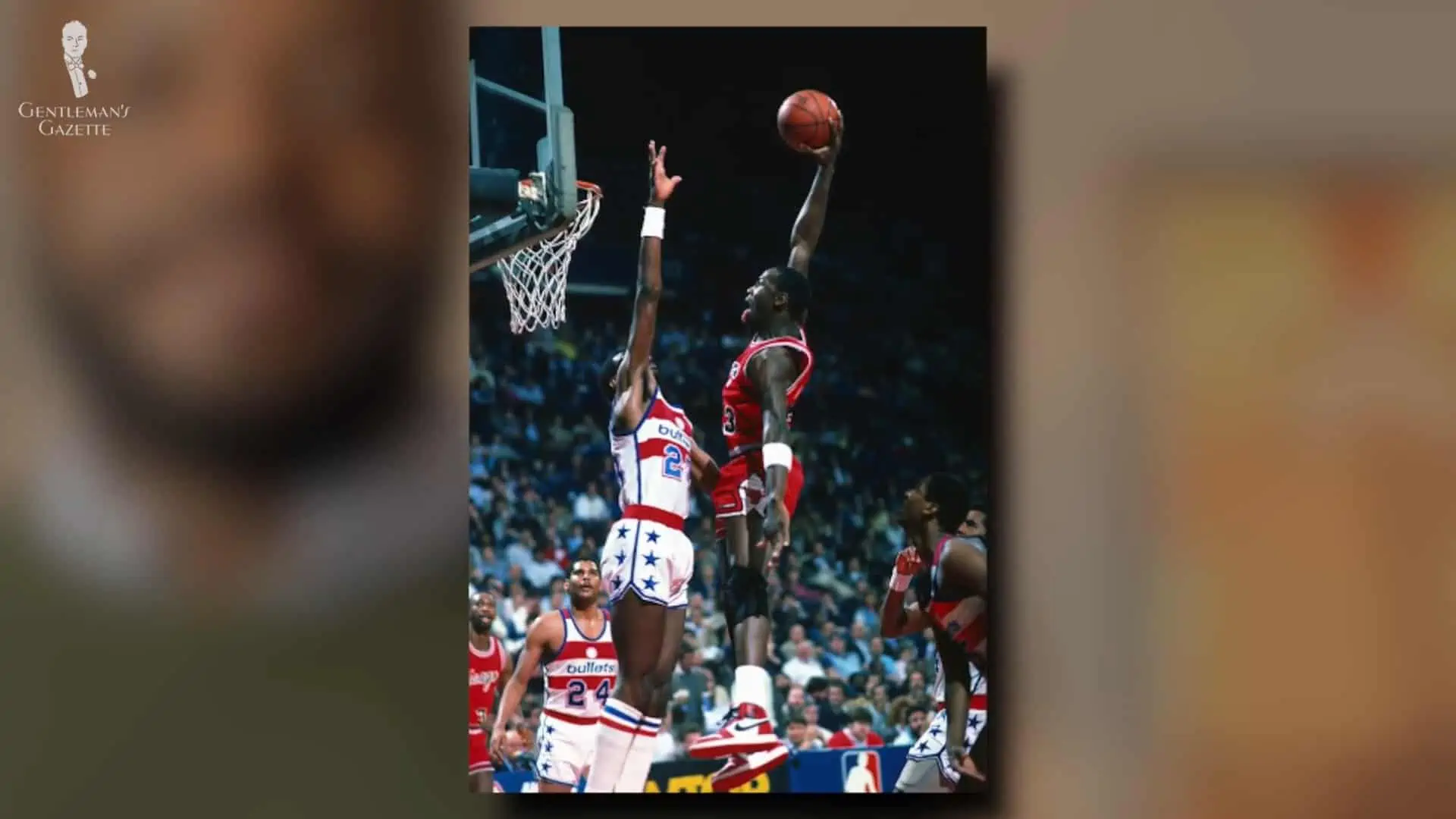
Sensing they had struck gold, Nike prominently featured these sneakers in the following year’s blockbuster smash hit film Back to the Future. The film spoke to its teen and teen-at-heart audience and it became more commonplace to see sneakers worn outside of a sporting setting, as seen on Marty McFly and another 80s-90s icon, Bart Simpson.
The sneakers became synonymous with skateboarding culture. This continued into the 90s. A big part of this culture included musical identity too, with rap music being especially prominent. So, as these cultures developed, so did the popularity of sneakers.
It’s at this point in footwear history that we can see two clearly defined choices and the disappearance of the middle ground. You’d have a super formal shoe for work and some super casual sneakers for leisure, which was a big departure from having mainly formal shoes in your wardrobe.
Shoes in the New Millenium
As we look at the 2000s, we can see the divide between casual and formal become somewhat blurred and that there are no set rules about what is worn when. As society continues to change and flex, it’s easy to see how dress codes are being questioned.
Take the workplace as an example. History has shown us that when you’re at work, there’s an expectation for you to look a certain way, which is typically meant a suit, tie, and dress shoes, regardless of the job you’re doing, unless it’s hard manual labor, because this is where people would have spent a majority of their time.

A man’s wardrobe would be kitted out with mainly formal, work-appropriate clothing, and shoes. And perhaps a few casual pieces for leisure time. But, in today’s world, most workplaces have a far more relaxed dress code and, if you don’t need to wear formal clothing for your work, the assumption is that you won’t need formal clothing for your time away from work.
We’ve already looked at how casual clothing has evolved throughout the past few decades. And with changing fashions it’s only natural that the workplace would follow suit. This is evidenced in the TV series Mad Men, where we see the styles changed from the early 60s office into the almost 70s office, and the traditional office-based workplace has continued to evolve with advances in the technology, lifestyle, and clothing choices we now make.
The daily dress code is far less rigid than it used to be, as, in the 21st century, a worker’s ability is valued higher than how they dress. Effectively, as long as you aren’t dressed in a way that’s going to offend the general public, you have freedom of choice when it comes to your clothes.
We can also see the personal fitness trend of the 80s is still present. As although we may have ditched the Lycra and leg warmers, there’s a huge move towards physical health and appearance.
Let’s face it, we all secretly wanted to be on American Gladiators, so, like in the 80s, people within the fitness community want to look their best when working out, as well as traveling to and from the gym without having to carry lots of things. Hence, the introduction of athleisure clothing, as a form of stylish, refined gym wear.
Of course, there are many people who enjoy wearing athleisure who don’t partake in physical fitness. But, do you think those gym wear brands really mind that? After all, they’re in the business of selling clothes and won’t discriminate against whoever wants to buy them.
So, it may be because athleisure is designed to be comfortable for a spot in the gym or just a day watching Netflix, or perhaps it’s the continued celebrity endorsement that has led to clothing gains. Ultimately, there’s no denying that sportswear has become acceptable streetwear, too.
The End of the Dress Shoe?
So what is it about a dress shoe that makes it less attractive in today’s society? Let’s put forward all the factors and be objective about this.
First up, they typically have a much higher upfront cost than casual shoes. A quality dress shoe will be made of leather, requires greater time and skill to make, thus resulting in a larger ticket price than a typical sneaker might.
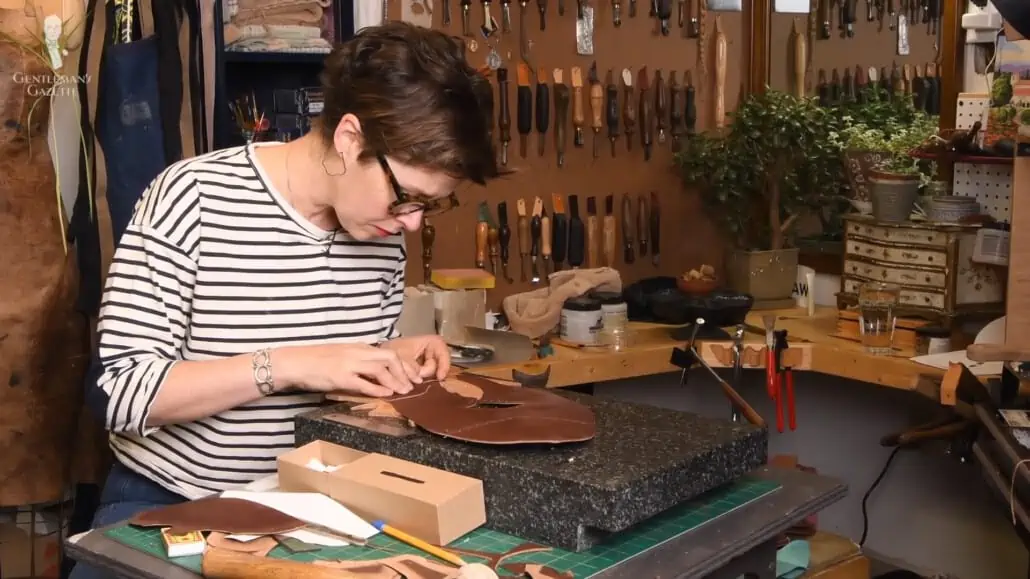
Further to this, they require time and money beyond the initial purchase to help maintain them. Leather creams, polishes, and wooden shoe trees; these all come at a cost. You’ve also got to consider your time at shoe care routines as well, which can be especially tricky in an instant gratification age, where our attention spans can be much shorter than they used to be.
Dress shoes can also be uncomfortable at first and will require a little bit of time to break them in, which is another consideration. But, before you spend your time and money on a pair of dress shoes, the question is: do you even need a pair?
After all, we know more offices are embracing casual styles and if you work on a job where a uniform is provided, you’ll have little to say about what you wear on your feet. Therefore, chances are you want to continue wearing casual shoes in your leisure time as well. So, the stakes are looking pretty bleak for the dress shoe.
But, what about the sneaker? Well, it’s definitely not the golden boy of shoe options. Although the majority may have a lower upfront cost when compared to a dress shoe, there’s a multitude of high-end, designer sneakers, which cost way more upfront.
Although a sneaker doesn’t typically require much maintenance once you’ve bought it, this just means that they look worn and tired that much quicker.
So, the answer would be to just buy a new pair once your current pair wears out. But, doing this frequently, even with low-upfront-cost shoes is going to end up being more expensive than investing in a quality dress shoe.
And what happens when your sneakers do wear out? Well, you can’t get them resoled like a leather dress shoe, so they end up in a landfill. Moreover, because of the abundance of artificial materials that go into their manufacture, they won’t decompose as natural fibers would.
Conclusion
Ultimately, we’ll conclude by saying that even though it might not be as every day as it used to be, the dress shoe isn’t dead as there’s a whole host of menswear enthusiasts out there who enjoy classic, quality footwear.
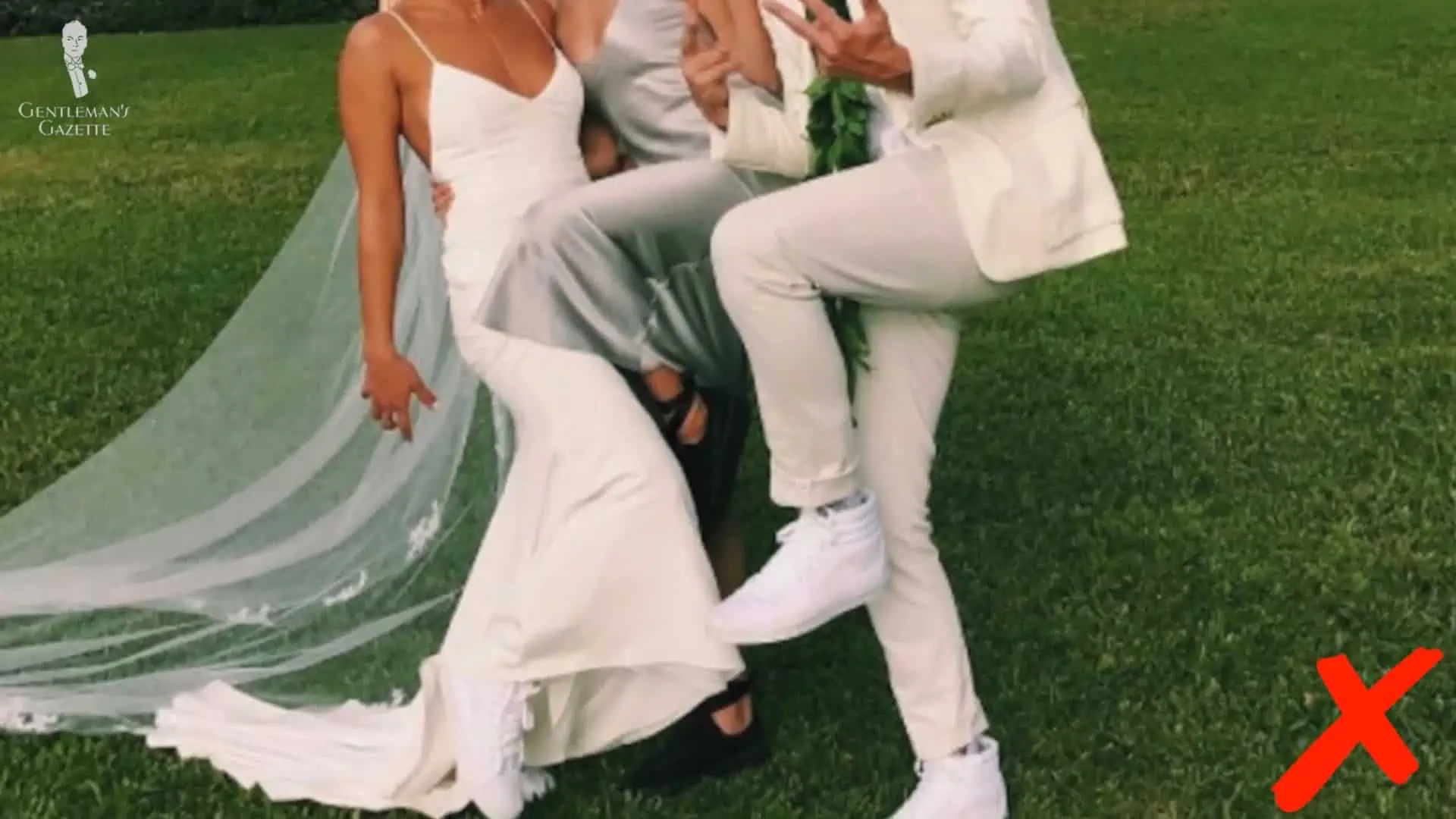
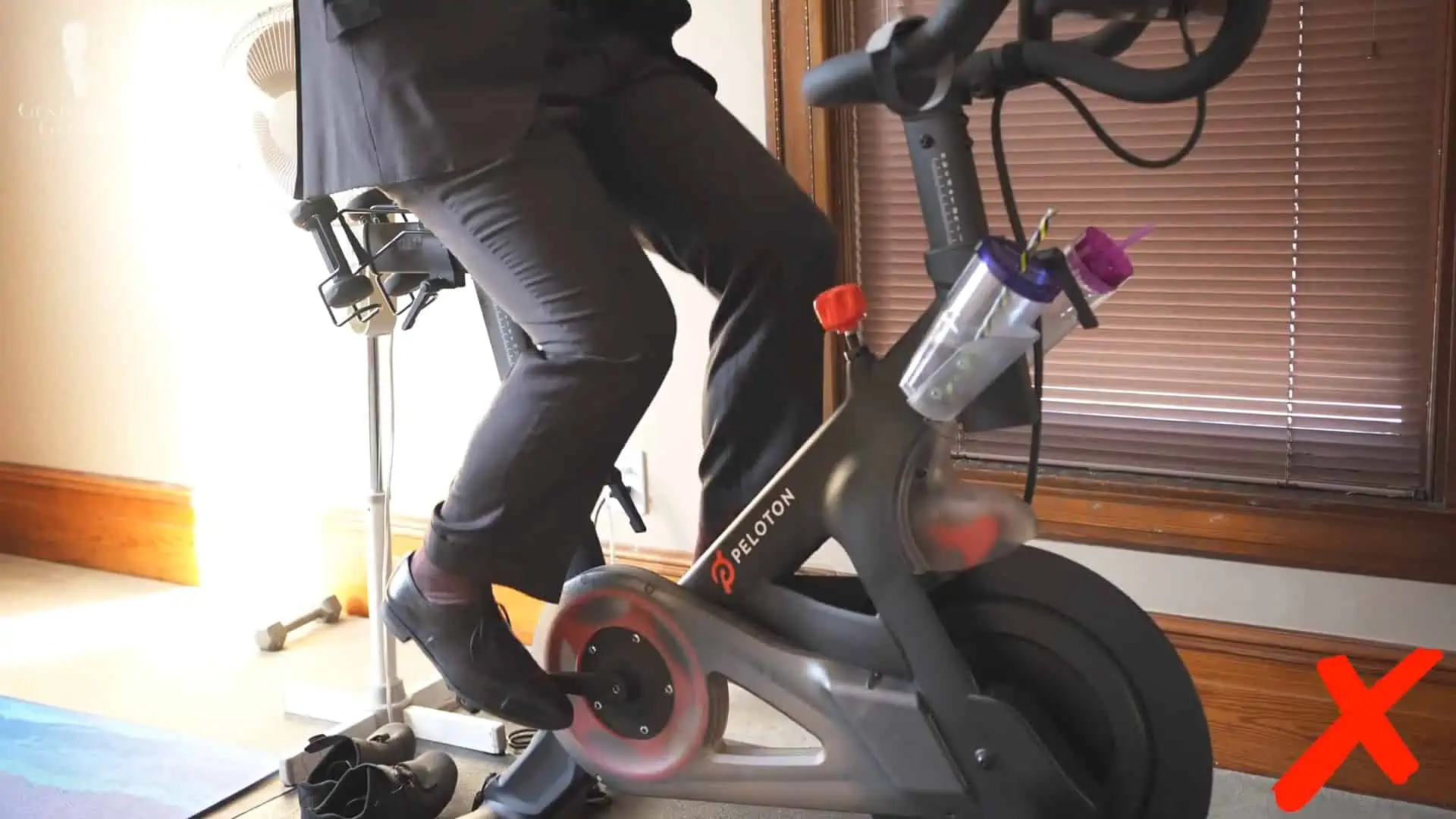
If there’s anything that you can take away from this post, it’s that your wardrobe has space for things on both ends of the spectrum because there’s nothing worse than turning up to a wedding in your sneakers or taking a spin at the gym in your dress shoes.
Outfit Rundown
So, today, I’m wearing a green cable knit sweater and a blue and white striped dress shirt with navy blue trousers, brown dress shoes, and brown Fort Belvedere socks.
For the pair of socks that I’m wearing, you can take a look at the Fort Belvedere shop here.
